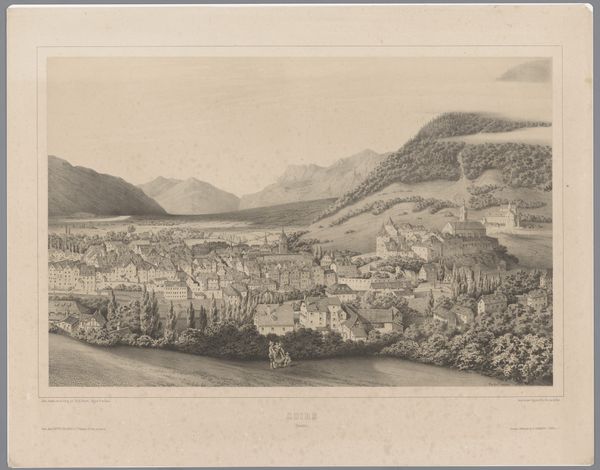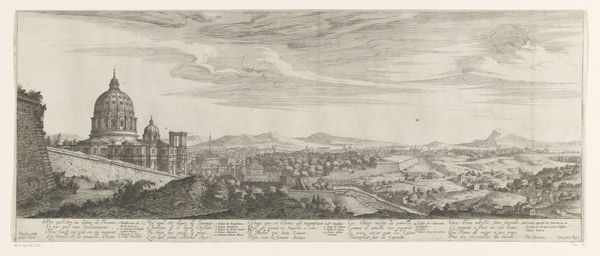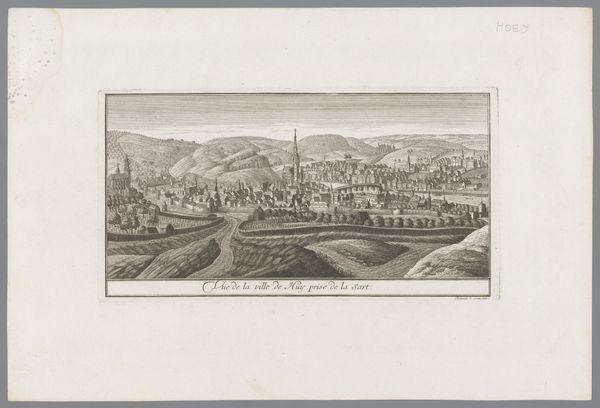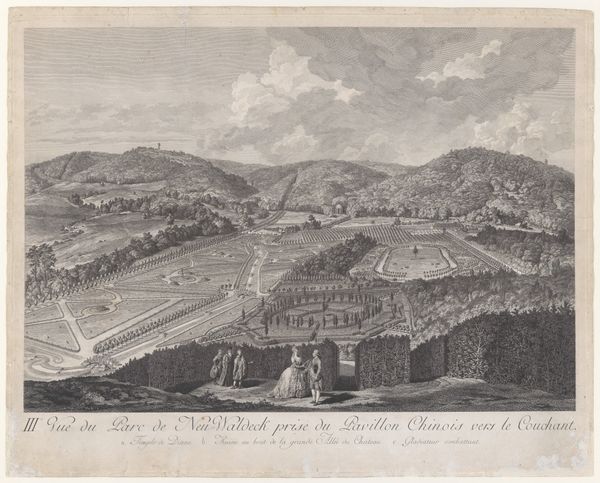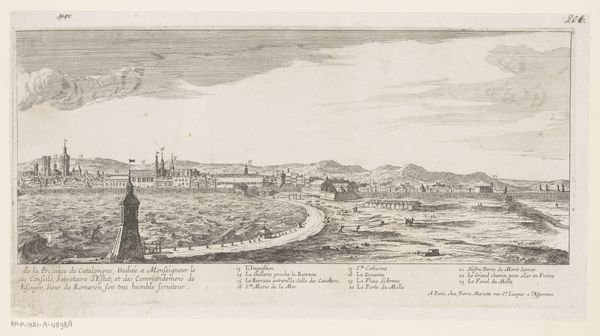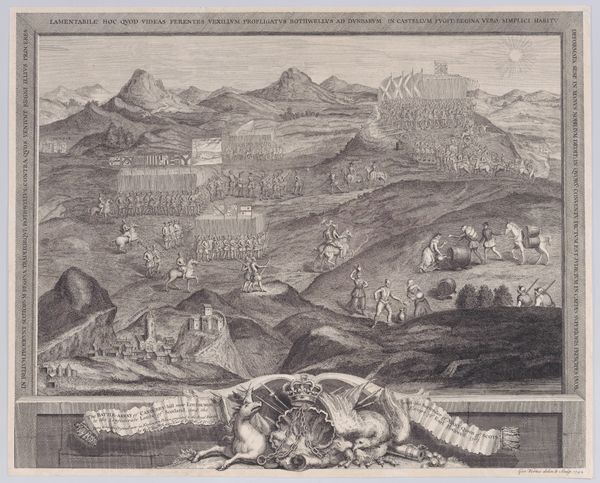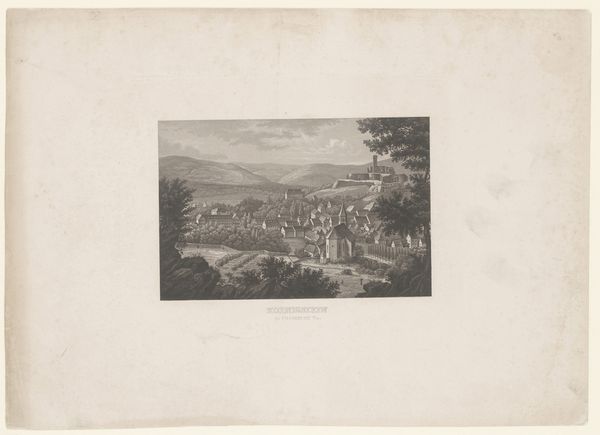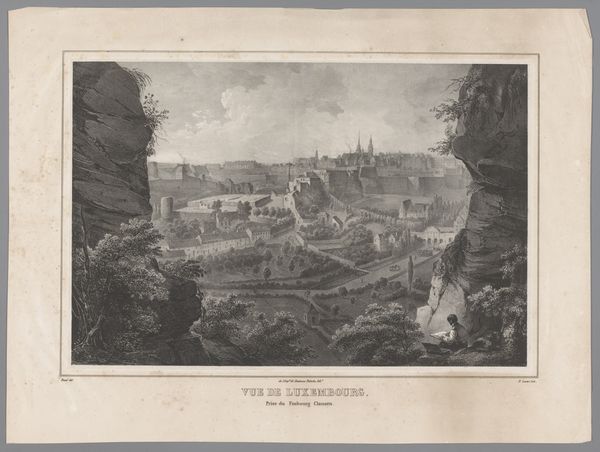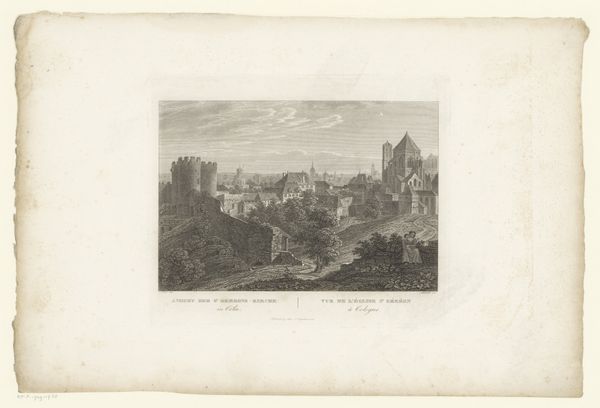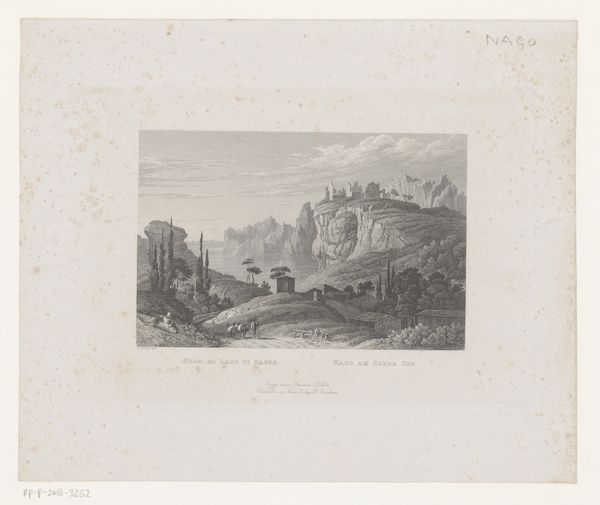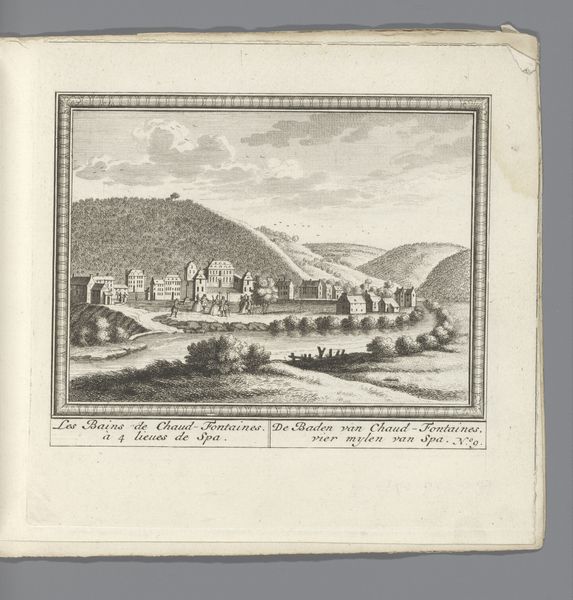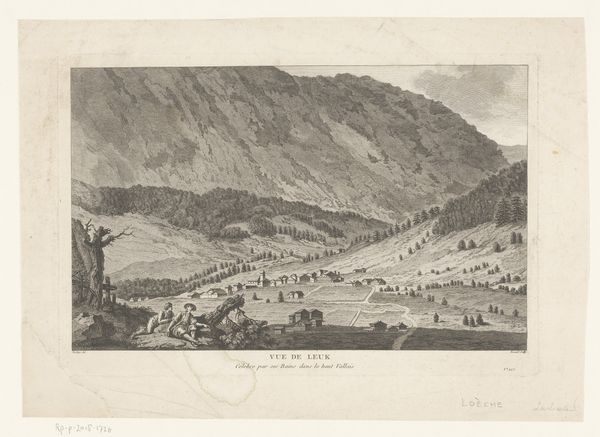
Gezicht op de noordoostzijde van Heidelberg met links Schloss Heidelberg 1784
0:00
0:00
abelschlicht
Rijksmuseum
Dimensions: height 488 mm, width 630 mm
Copyright: Rijks Museum: Open Domain
Editor: This is "View of the Northeast Side of Heidelberg with Heidelberg Castle on the Left" created by Abel Schlicht in 1784. It’s an engraving. The sepia tones give it an old-world, nostalgic feel, and the meticulous detail is captivating. What's your take on this piece? Curator: What I find compelling here is how Schlicht situates Heidelberg within the context of the burgeoning Romantic movement and its interest in landscape and the sublime. This print, published so close to the French Revolution, can be understood as a reaction to the monumental shifts occurring in society, where viewers would long for an idealized, safe version of their towns. Notice how the castle dominates the skyline; does this symbolize the enduring power of the aristocracy? Editor: It’s interesting to think of the print as a form of escapism. I hadn't considered the political climate at the time. So, are you saying the artist might be consciously playing into that nostalgia? Curator: Absolutely. This image presents an ordered and picturesque vision of Heidelberg, one likely very different from the lived experience of its inhabitants in 1784. It reinforces a specific, arguably sanitized, image of German identity. This begs the question, who was this print made for and what purpose did it serve in constructing a shared understanding of Heidelberg? Editor: So it’s not just a pretty picture; it’s actively shaping how people perceive their town and its history. I didn't really look beyond the aesthetics. Curator: Exactly! These prints, widely disseminated, contributed significantly to constructing a sense of place and collective identity. And considering that it's at the Rijksmuseum today, that legacy continues to shape our views of German cultural identity, too. Editor: That's a perspective I hadn't fully grasped. I’ll definitely be looking at art with a more critical eye from now on. Curator: Precisely, appreciating the artistic skills, as well as investigating its role in wider conversations about identity, power, and historical memory.
Comments
No comments
Be the first to comment and join the conversation on the ultimate creative platform.
